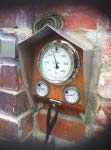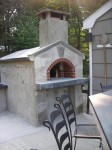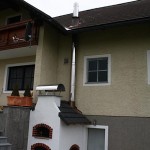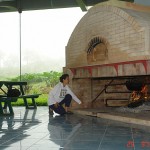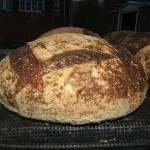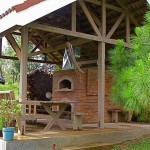back to board Main Page
Re: Floor heat
From the WFO board
Posted by Rado (211.29.255.157)
In Reply to: Re: Floor heat posted by Richard
Hi Eric,
Sorry for delayed reply, too much work and long days last 2 weeks.
To your 1st question "What is right?" in regards to use hay mixed into clay or not. My personal opinions on this are; why would you mix hay or straw into clay in oven building to form dense hot face? Is it because it's mixed into house mud bricks? I just don't want to say it is not right to do so, I just never did so. It makes lightweight blocks. I always thought the hay burns away in first proper heat up leaving behind empty air spaces. Air won t absorb heat making the dense part partly less heat absorbing. Air is the best insulation, also in effective ceramic blankets insulation the material is there to create many air spaces and separate them forming something like honeycomb.
But structurally the hay perhaps helps to lessen cracking when the wet clay starts to shrink although you mentioned it was cracking but could repair. I did clay ovens made of leather hard adobes with coarse river sand mixed into the clay or mud (semi dry still dark with water in but these went through biggest shrinking already and can be still bond with the same clay mortar easily.) Or clay can be grabbed from bulk and built in stages in circles, leaving half day pause before going on second circle and so on (or whole day depends on how fast the clay dries shouldn't be done on the sun.) Thickness of walls depends on what's planed to be cooking in. More energy stored in equals thicker dense walls and then some efficient insulation, this all can be done out of what's the mother nature offers to us for free. As soon as I found some time for writing I go too far, why is it?!
2. You can apply clay with stones on top or weak cement mortar layer on old fence wire and then insulation as well, otherwise the heat gets lost. Even if it's clay oven I would still insulate it (this is not revolutionary this is common sense.) The final layer can be lime mixed in water into thick consistency and painted in 5 layers, it can be repainted over and over and it cost nothing.
Clay/mud ovens will bake very nice breads and cook very nice foods, one has to be careful not to throw firewood in colliding with the wall as it's unstabilized clay (called also green clay - unfired in kilns, e.g. like firebricks) and starts to peal when touched. Also right clay should be picked or it'll flux under heat or crumble and make additions to pizza toppings. It is not hard to find the right clay it's everywhere around us, I write on this in my cdrom's equivalent materials and sources folder for alternate materials use and location, testing or working with them.
3. Richard answered it all in his posting basically, it really isn't science.
Porous bricks will not absorb heat and so nothing is there to hold for long time. But also 2inch or 5cm thick hearth will not do, it'll only do pizzas while good bed of red hot cinders is swept away but will cool down soon after. Add some firebrick thickness to the floor it will absorb more heat and be hot longer time, just that and you will make perfect pizzas. A bit about firebricks 24 to 30% alumina is perfect, no need for more alumina content as many people ask, alumina is there to cope with different grades of heat (to be exact; also density is not the case to increase better heat retention, absorption. There is only minimal difference for keeping more heat and most of stories come from commercial world maybe. Ask this ... why does e.g. graphite with bulk density of only 80kg/m3 - 140kg/m3 absorb much more heat then clay?
I will be adding new pictures into gallery by Sunday evening, about 15 different oven photos emailed to me since the last bulk added in. r
Re: Floor heat
- Re: Floor heat - Richard
- Re: Floor heat - Rado
- Re: Floor heat - Eric
- Re: Floor heat - Eric
- Re: Floor heat - Rado

Jamie and Katrina's brick oven with temperature gauge, in Victoria.
Concrete blocks used for the oven’s outer walls. By Joe in Connecticut USA
Wood fired family oven and chimney project by Robert in Austria
My oven with fireplace, cook food and heat water, by Joel in Philippines
Baking sourdough breads in quantity in Canada
Pizza oven and hut built by Tony in Philippines
